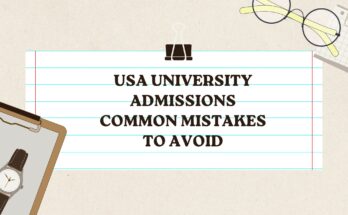University athletics, fondly nicknamed “college sports” in the US, are a cultural phenomenon deeply woven into American society. From packed stadiums cheering on football teams to passionate basketball rivalries, these programs offer a unique blend of academics and athletics. If you’re curious about navigating this world, here’s a comprehensive guide to understanding USA university sports programs:
The Landscape:
The National Collegiate Athletic Association (NCAA) governs most varsity sports at US universities. Divided into three divisions (Division I, II, and III), the NCAA sets regulations for scholarships, competition, and academics. Division I boasts the most high-profile programs, with lucrative athletic departments and nationally televised games. Division II and III prioritize academics while still offering competitive athletics and scholarships.
Athletic Conferences:
Universities within NCAA divisions further organize themselves into conferences based on geography and historical rivalries. These conferences hold their own championships, with winners potentially advancing to the prestigious NCAA championships. Powerhouse conferences like the Southeastern Conference (SEC) and the Big Ten are known for their intense competition and top-ranked teams.
Sports Offered:
The range of sports offered in university programs is vast. Football, basketball (men’s and women’s), baseball, softball, and track and field are some of the most popular. However, dozens of other sports like ice hockey, volleyball, swimming & diving, tennis, and even rowing find dedicated programs across different divisions.
Scholarships & Recruiting:
Athletic scholarships are a significant aspect of Division I programs. These scholarships cover a student-athlete’s tuition, fees, and living expenses in exchange for their commitment to compete for the university. The recruitment process is intense, with coaches scouting talented high school athletes across the country.
Academics & Eligibility:
Balancing academics and athletics is crucial for student-athletes. The NCAA has minimum academic requirements that athletes must meet to maintain their eligibility to compete. Many universities offer support services like tutoring and academic advisors specifically for student-athletes.
The Fan Culture:
College sports boast a passionate and dedicated fan base. Alumni, students, and local communities rally behind their universities’ teams, creating an electrifying atmosphere at games. From elaborate tailgating traditions before football games to iconic fight songs chanted at basketball games, the fan culture is an integral part of the college sports experience.
Benefits of Participating:
Participating in university athletics offers numerous benefits beyond just athletic competition. Student-athletes develop valuable skills like teamwork, leadership, time management, and discipline. These skills translate well into future careers and personal lives. Additionally, athletic scholarships can significantly reduce the financial burden of higher education.
Challenges of Participating:
The demands of being a student-athlete are high. Balancing academic workload with rigorous training schedules and travel demands can be challenging. Injuries are also a concern, potentially hindering athletic careers and impacting academic progress.
Considering College Sports:
If you’re a high school athlete aspiring to compete at the university level, it’s crucial to research and showcase your talent. Highlight your athletic achievements through highlight tapes and camps. Maintain good academic standing as well, as strong grades are essential for gaining admission and scholarship opportunities.
Spectating College Sports:
Attending a college sporting event is a thrilling experience. Cheer on your favorite team with fellow fans, witness high-level athleticism, and soak in the vibrant atmosphere. Tickets can be purchased online or at the stadium, with prices varying depending on the sport, venue, and opponent.
The Future of College Sports:
The future of college sports faces challenges like athlete compensation for use of their name and image, the transfer portal allowing athletes to switch schools more easily, and the growing influence of professional leagues scouting high school talent. Despite these challenges, college sports are likely to remain a cornerstone of American culture, offering a unique blend of athletics, academics, and passionate fan support.
In Conclusion:
USA university sports programs are a captivating and complex ecosystem. From the intense competition on the field to the dedicated fan culture in the stands, college sports offer a unique and exciting experience. Understanding the structure, benefits, and challenges associated with these programs can be valuable for student-athletes, aspiring fans, and anyone interested in American culture.



